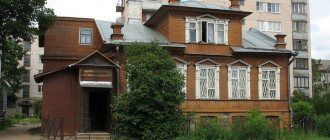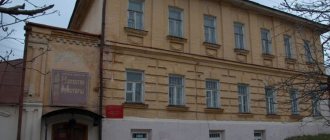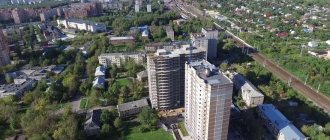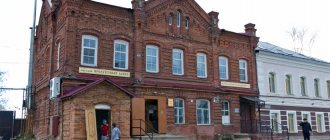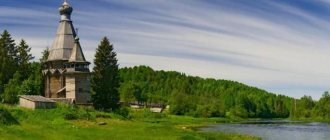Sebezh
| A country | Russia |
| Status | urban settlement |
| Included in | Sebezhsky district of Pskov region |
| Includes | 69 settlements |
| Administrative center | Sebezh city |
| Population (2016) | ↘7353[1] |
| Timezone | MSK (UTC+3) |
| Auto code numbers | 60 |
Sebezh
- a municipal entity with the status of “urban settlement” in the Sebezh municipal district of the Pskov region.
The administrative center is the city of Sebezh.
Geography
The territory of the urban settlement borders in the west with the urban settlement of the Municipal Municipality "Sosnovy Bor", in the north and south - with the rural settlement of the Municipal Municipality "Sebezhskoye" (former Tomsinskaya, Dubrovskaya, Glembochinskaya and Lavrovskaya volosts), in the east - with the Maksyutinskaya and Mostishchenskaya volosts of the Sebezhsky district of the Pskov region areas.
On the territory of the urban settlement there is Lake Zalosemye (1.3 km², up to 6 m deep) and others, [2] as well as, on the southern border, on the border, Lake Sebezhskoe (15.8 km²) and Lake Orono or Voron (5 .8 km²).
Natural attractions of Sebezh and surrounding areas
The surroundings of Sebezh are truly a lake region: in a small area there are about 200 reservoirs. Tourists should first of all admire the largest lakes – Sebezhskoe and Orono, which wash the outskirts of the city. In addition to reservoirs, guests of Sebezh are recommended to visit the Kazan Holy Spring and Petrovskaya Mountain.
Sebezhskoye Lake
- Coordinates: 56.264262, 28.498819.
Ancient Sebezh was built on the shore of the vast Sebezh Lake. It is believed that it was the reservoir that gave the name to the settlement. The lake has an elongated shape, its length is 7 kilometers, width – 3 kilometers.
The average depth is 5 meters, although there are dips up to 18 meters deep. At one time, passenger ships sailed on the reservoir. There is a lot of fish in Sebezhskoye; among dozens of species, the most numerous are bream and pike perch.
Lake Orono
- Coordinates: 56.266832, 28.459158.
On the opposite outskirts of the city lies Lake Orono, otherwise called Raven. Orono is almost three times smaller in size than Sebezhsky. In addition to Sebezh, there are three more settlements on the banks of the reservoir: Ugarinka, Ilovo and Mironovo.
The lake is rich in fish; it is home to perch, pike perch, pike, ide, crucian carp, bream and many other species. If you're lucky, you can catch crayfish.
Petrovskaya mountain
- Coordinates: 56.283285, 28.483943.
The high hill opposite the central market has several names: Petrov Val, Petrovskaya Gora, Petrov Gora, Petrovsky fortifications. According to legend, in 1705 Peter I ordered the construction of a defensive fortress on the Sebezh hill. This story is partly confirmed by archaeological finds in the hill area.
The mountain received the name of the first Russian emperor, and in 1972 a memorial plaque was installed on its upper platform. According to the inscription on the monument, the peak was the site of fortifications during the Northern War. Today the hill is used as an observation deck, from which you can clearly see Castle Hill.
Embankment
- Address: Naberezhnaya street.
Sebezhskaya embankment is one of the most picturesque places in the city. The promenade stretches along the edge of the cape, the asphalt road is almost at the same level with the water. Benches and tall street lamps are installed along the embankment.
On a small pier there is an original wooden gazebo, made in the shape of a ship. Local residents love to walk next to the lake and feed seagulls and swans from the shore.
Square "Lebyazhy"
- Address: Naberezhnaya street.
Relatively recently, a small but very beautiful and landscaped park was laid out near the embankment. The new place for leisure for the townspeople was called “Swan Square”, as beautiful white swans can often be seen here.
According to local residents, black swans used to fly to the lake, but recently the rare birds have not appeared on Sebezh land.
There are several interesting objects in the park: figures of swans, reed-shaped lanterns, benches with swan wings. In October 2020, a cozy corner was decorated with a sculpture of Pike from the fairy tale “At the Pike’s Command.”
Kazan Holy Spring
- Coordinates: 56.262611, 28.470532.
On the territory of the National Park, in the middle of a pine forest, a revered holy spring gushes out of the ground. Even before the Revolution, a small wooden chapel was built above the spring in honor of the Kazan Icon of the Mother of God. During Soviet times, the building was completely destroyed in order to stop pilgrimages to the shrine.
In 1998, a new chapel was erected over the spring. There are steps leading up to the church, and information stands are installed on both sides of the stairs. The water of the holy spring is healing even from the point of view of science, because it contains silver ions.
Lake Sentsy
- Coordinates: 56.291823, 28.473172.
Another beautiful lake is located within Sebezh. It is located almost in the central part of the city. Street 7 November approaches almost right next to it.
Latric Island
- Coordinates: 56.279201, 28.506657.
The island of Latrik, known primarily from an archaeological point of view, is located in Lake Sebezhskoye and is clearly visible from Castle Hill. As archaeologists say, sites of ancient man were discovered here. Also, since the island is not currently in use, it is quite possible to find military supplies from the war on it.
Settlements
The urban settlement "Sebezh" includes 69 settlements, including the city of Sebezh and 68 villages: Ulyanovshchina, Avseikovo, Aksenovo, Arestovo, Andripolye, Baranovshchina, Bubnovka, Brusnichno, Bychkovo, Belkino, Belchaninovo, Barsuki, Berezka, Budkevshchina, Vyselki , Gusevo-1, Gusevo-2, Gorbovo, Gasporovo, Glazkovo, Gornaya, Gryaznye, Gelenchino, Dolgovo, Dmitrovo, Zaturye, Zagady, Zamosc, Zamoshye, Zuevka, Zalosieme, Klevino, Krekovo, Kuzmino, Kuznetsovka, Kremenets, Korshaninkovo, Kamenets , Karpino, Loguny, Litvinovka, Malkovo, Motygino, Mogilno, Mill, Housewarming-1, Housewarming-2, Osetki, Ostrovno, Ovchinnikovo, Purgeli, Ptushkino, Podkolenkovo, Plavlivo, Sidorkovo, Sovrashina, Syltanovo, Violins, Tekhomichi, Taraskino, Frolovschina , Tsynki, Shkigino, Jesters, Epimahovo, Yaskino, Svidershina, Sundukovo.[8][9]
The urban population is 76.3% (6375 residents of the city of Sebezh), the rural population is 23.7% (or 1979 rural residents). Total - 8354 inhabitants (2010 census).[10]
See also: List of settlements in Sebezh region
Sebezh architectural monuments
More than 20 Sebezh buildings have been recognized as architectural monuments of regional significance. Most of the century-old houses are located in the historical center of the city - on Proletarskaya Street.
House of the merchant Bruskin
- Address: Proletarskaya, 31.
The two-story stone mansion on Proletarskaya Street is one of the most famous buildings in the city. An unremarkable house in the neoclassical style in the 19th century belonged to the merchant of the 2nd guild Moses Bruskin.
Moisei Izrailevich traded timber, and his wife took care of a large family. During Soviet times, the city council was located in the mansion. The architectural monument has been preserved in good condition; today the premises are occupied by a notary's office and other organizations.
House of merchant Selyugin
- Address: Sovetskaya street, 13.
The brick mansion of the Sebezh merchant Selyugin was built in 1890, as evidenced by the mortgage board on the facade of the building. Above the name of the owner and the date of construction, a short prayer is inscribed in capital letters: “Lord, protect this house from all evils and do not forsake those who trust in Thee.”
The businessman's former possessions are one of the richest in the city: in addition to a two-story house, they include a warehouse, a trading store and a number of outbuildings.
Today, several families live in the renovated merchant house; modern plastic windows adorn the window openings of the architectural monument. One of the warehouses of the architectural complex is used as a store.
House of the priest
- Address: Zamkovaya, 12.
Not far from the former Church of the Holy Trinity there is a house in which Catholic clergy once lived. According to local historians, the construction of a small one-story building was completed in 1890. After the church was closed, the priest's house was nationalized.
Since 1948, it housed the district military registration and enlistment office. Nowadays, the department of the Federal Tax Service of the Russian Federation for drug control operates in the building, but the authorities plan to transfer the architectural monument to the Trinity Church as a clergy house.
Medunetsky's House
- Address: Zamkovaya, 6.
The rich and prolific Medunetsky family owned several buildings on Proletarskaya and neighboring streets. One of the largest mansions of the landowner (Proletarskaya, no. 18) was erected in the first half of the 19th century.
In the first years of Soviet power, the house became the property of the working people, after the war it was adapted into a House of Culture. The second floor of the building was occupied by the library and the National Park office. Then the old house was transferred into private hands. When the mansion fell into disrepair, it was simply abandoned.
Over the past years, the architectural monument has not been restored. The dilapidated building makes a depressing impression; it is better to observe it from a distance, since the roof and walls periodically crumble and threaten to fall on passers-by.
Apartment house Rutkovsky
- Address: st. Proletarskaya, 25.
Before the Revolution, wealthy Sebeans built mansions not only for their families, but also for rent. Some similar buildings have survived to this day, one of them is the Rutkovsky apartment building, built in the second half of the 19th century.
Just like many other rich townspeople, the landowner built his house on the most crowded street of Peter the Great.
The two-story corner brick building fits perfectly into the architectural appearance of the historical city center. In 1998, the mansion was given the status of a monument of urban planning and architecture. Currently, the building houses the Central District Library.
An excerpt characterizing Sebezh (urban settlement)
- Rostov! - What? – he responded, not recognizing Boris. - What is it like? hit the first line! Our regiment went on the attack! - said Boris, smiling that happy smile that happens to young people who have been on fire for the first time. Rostov stopped. - That's how it is! - he said. - Well? - They recaptured! - Boris said animatedly, having become talkative. - You can imagine? And Boris began to tell how the guard, having taken their place and seeing the troops in front of them, mistook them for Austrians and suddenly learned from the cannonballs fired from these troops that they were in the first line, and unexpectedly had to take action. Rostov, without listening to Boris, touched his horse. - Where are you going? – asked Boris. - To His Majesty with an errand. - Here he is! - said Boris, who heard that Rostov needed His Highness, instead of His Majesty. And he pointed him to the Grand Duke, who, a hundred paces away from them, in a helmet and a cavalry guard's tunic, with his raised shoulders and frowning eyebrows, was shouting something to the white and pale Austrian officer. “But this is the Grand Duke, and I’m going to the commander-in-chief or the sovereign,” said Rostov and started to move his horse. - Count, count! - shouted Berg, as animated as Boris, running up from the other side, - Count, I was wounded in my right hand (he said, showing his hand, bloody, tied with a handkerchief) and remained in the front. Count, holding a sword in my left hand: in our race, the von Bergs, Count, were all knights. Berg said something else, but Rostov, without listening to him, had already moved on. Having passed the guards and an empty gap, Rostov, in order not to fall into the first line again, as he came under attack by the cavalry guards, rode along the line of reserves, going far around the place where the hottest shooting and cannonade was heard. Suddenly, in front of him and behind our troops, in a place where he could not possibly suspect the enemy, he heard close rifle fire. "What could it be? - thought Rostov. - Is the enemy behind our troops? It can’t be, Rostov thought, and a horror of fear for himself and for the outcome of the entire battle suddenly came over him. “Whatever it is, however,” he thought, “there’s nothing to go around now.” I must look for the commander-in-chief here, and if everything is lost, then it’s my job to perish along with everyone else.” The bad feeling that suddenly came over Rostov was confirmed more and more the further he drove into the space occupied by crowds of heterogeneous troops, located beyond the village of Prats. - What's happened? What's happened? Who are they shooting at? Who's shooting? - Rostov asked, matching the Russian and Austrian soldiers running in mixed crowds across his road. - The devil knows them? Beat everyone! Get lost! - the crowds of people running and not understanding, just like him, what was happening here, answered him in Russian, German and Czech. - Beat the Germans! - one shouted. - Damn them - traitors. “Zum Henker diese Ruesen... [To hell with these Russians...],” the German grumbled something. Several wounded were walking along the road. Curses, screams, moans merged into one common roar. The shooting died down and, as Rostov later learned, Russian and Austrian soldiers were shooting at each other. "My God! what is this? - thought Rostov. - And here, where the sovereign can see them at any moment... But no, these are probably just a few scoundrels. This will pass, this is not it, this cannot be, he thought. “Just hurry up, pass them quickly!” The thought of defeat and flight could not enter Rostov’s head. Although he saw French guns and troops precisely on Pratsenskaya Mountain, on the very one where he was ordered to look for the commander-in-chief, he could not and did not want to believe it. Near the village of Praca, Rostov was ordered to look for Kutuzov and the sovereign. But here not only were they not there, but there was not a single commander, but there were heterogeneous crowds of frustrated troops. He urged his already tired horse to get through these crowds as quickly as possible, but the further he moved, the more upset the crowds became. The high road on which he drove out was crowded with carriages, carriages of all kinds, Russian and Austrian soldiers, of all branches of the military, wounded and unwounded. All this hummed and swarmed in a mixed manner to the gloomy sound of flying cannonballs from the French batteries placed on the Pratsen Heights. - Where is the sovereign? where is Kutuzov? - Rostov asked everyone he could stop, and could not get an answer from anyone. Finally, grabbing the soldier by the collar, he forced him to answer himself. - Eh! Brother! Everyone has been there for a long time, they ran away! - the soldier said to Rostov, laughing at something and breaking free. Leaving this soldier, who was obviously drunk, Rostov stopped the horse of the orderly or the guard of an important person and began to question him. The orderly announced to Rostov that an hour ago the sovereign had been driven at full speed in a carriage along this very road, and that the sovereign was dangerously wounded. “It can’t be,” said Rostov, “that’s right, someone else.” “I saw it myself,” said the orderly with a self-confident grin. “It’s time for me to know the sovereign: it seems like how many times in St. Petersburg I’ve seen something like this.” A pale, very pale man sits in a carriage. As soon as the four blacks let loose, my fathers, he thundered past us: it’s time, it seems, to know both the royal horses and Ilya Ivanovich; It seems that the coachman does not ride with anyone else like the Tsar. Rostov let his horse go and wanted to ride on. A wounded officer walking past turned to him. -Who do you want? – asked the officer. - Commander-in-Chief? So he was killed by a cannonball, killed in the chest by our regiment. “Not killed, wounded,” another officer corrected. - Who? Kutuzov? - asked Rostov. - Not Kutuzov, but whatever you call him - well, it’s all the same, there aren’t many alive left. Go over there, to that village, all the authorities have gathered there,” said this officer, pointing to the village of Gostieradek, and walked past. Rostov rode at a pace, not knowing why or to whom he would go now. The Emperor is wounded, the battle is lost. It was impossible not to believe it now. Rostov drove in the direction that was shown to him and in which a tower and a church could be seen in the distance. What was his hurry? What could he now say to the sovereign or Kutuzov, even if they were alive and not wounded?
Temples and churches of the city of Sebezh
There are few functioning churches left in the Sebezh region. The oldest of them were built by the Poles.
Church of the Holy Life-Giving Trinity
- Address: Zamkovaya street, 13.
Orthodox Trinity Church on Castle Hill is the oldest church in the city and surrounding area. The stone church was erected in the mid-17th century, when Sebezh was once again captured by Polish invaders, and initially belonged to the Catholic Church.
In 1625, the Polish ruler Sigismund III ordered the construction of a wooden church in honor of the Holy Trinity on the site of the Basilian convent. The building did not last long; 20 years later it burned down in a terrible fire. In 1649, a new stone church was built on the site of the temple destroyed by fire.
The further fate of the building is similar to the fate of the city itself: due to wars and the varying successes of the Russian troops, the temple often changed owners, becoming either Orthodox or Catholic again. The building was rebuilt and consecrated more than once.
After the Revolution of 1917, the Bolsheviks closed the church; for a long time the building was used as a hostel, then as a grocery store. In 1988, the architectural monument was transferred to the Russian Orthodox Church.
Believers renovated the temple, changing its appearance and interior in an Orthodox manner: eight-pointed crosses were installed on the domes, and an iconostasis was installed inside. In 1990, the building was rededicated.
Chapel of St. App. Peter and Paul
- Address: st. 7th November, 35.
The stone Peter and Paul Chapel was built in the city center for the 2000th anniversary of the Nativity of Christ. Previously, a similar chapel of the same name stood on the central city square, but the communists destroyed the old building in the 20s of the last century.
In the late 90s, it was decided to erect a new building in honor of the holy apostles Peter and Paul. The foundation of the future church was laid in 1999, and a year later the finished chapel was solemnly consecrated.
The temple is holy. Nicholas the Wonderworker
- Address: Sebezh district, village of Zarodische.
In the village of Zarodische, the oldest stone structure in the entire Sebezh region has been preserved - the one-domed St. Nicholas Church. In 2022, the small beautiful temple will turn 420 years old. The building was originally built as a Polish Catholic church, which explains some of its architectural features.
The church was soon surrounded by a strong fence made of bricks and stone boulders. The luxurious interior was made in the Baroque style and has undergone virtually no changes over the past centuries.
The origin was founded by Poles, but over the years more and more Russians came to the village. By the end of the 19th century, Russians made up the overwhelming majority of the population, while very few Catholic Poles remained, so the villagers decided to reconsecrate the church into an Orthodox church. After the October Revolution, the church was desecrated more than once, but was not closed either during the times of persecution or during the years of fascist occupation.
Next to the temple there is an old cemetery, where several stone tombstones with inscriptions in Polish have survived.
In the far part of the cemetery, a round brick chapel-tomb stands out against a background of simple metal crosses, monuments and fences. The original Art Nouveau building was probably erected at the beginning of the 20th century.




